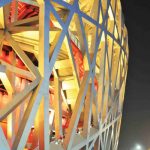-
Illuminating Research
April 2011
 MIT study finds potential for significant energy savings through user-controlled efficient lighting systems.
MIT study finds potential for significant energy savings through user-controlled efficient lighting systems.
In newer buildings it’s often hard even to find a plain old-fashioned light switch. Often, the only controls are automatic motion-detector switches that turn off lights when people have left a room – or when they sit too still – or else daunting control panels with arrays of sliders and buttons. But some researchers at the MIT Media Lab are aiming to put the control back in people’s hands.
Media Lab Associate Professor Joseph Paradiso says that “lighting systems keep getting more complex,” and increasingly use automated controls. But the new system being tested by members of his Responsive Environments Group could put the controls directly on users’ desktops.
The experimental control devices being tested are about the size of a business card, and thin enough to slip in a pocket. They monitor the light actually falling on the user’s working space, and contain light sensors as well as controls to adjust both the intensity and the colour balance of the light. In the current test setup, this information is used to control an array of LED (light-emitting diode) light fixtures, the most energy-efficient kind of lighting now available. And unlike most compact fluorescent bulbs, LEDs can be easily adjusted to any level of intensity.
The tiny controllers not only measure the intensity of the light falling on the workspace from the LEDs, but also identify how much light can come from different fixtures while separately measuring any ambient light coming in from the windows or spill-over light from neighbouring work areas. If the natural lighting is sufficient to meet the user’s needs, the overhead lights can dim or switch off altogether, and then are immediately reactivated if the sunlight decreases. The colour balance of the light can also be adjusted by varying the intensity of individual LED lamps of different colours.
The researchers also found that the system reduced the energy used for lighting by 65 to 90 percent.The impact of such technology could be considerable. The control system could be used with other light sources as well, including incandescents or dimmable fluorescents.
It’s not just about saving energy, Aldrich explains. “It opens up the space for user controls, so you can adapt the lighting to what suits you best.”











